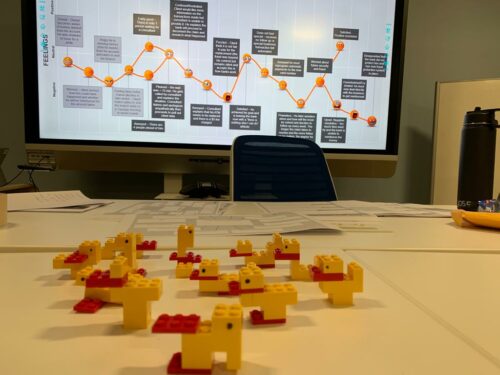
THE INDUSTRY:
Insurance or Consumer Goods or Corporate Products (THIS NEEDS TO BE DEFINED – IS IT A CONSUMER OR CORPORATE GOODS COMPANY THAT SIMULTANEOULSY OFFERS PRODUCT PROTECTION PLANS, OR AN INSURANCE COMPANY THAT TEAMS UP WITH OTHER COMPANIES TO PROVIDE INSURANCE COVERAGE FOR THE PRODUCT? IT’S SUPER UNCLEAR.
THE CHALLENGE:
Our client, an insurance firm offering protection plans for consumer goods or company selling consumer goods along with protection plans, experienced a steady decline in sales. Attempts to reverse that trend, like investing a considerable amount in communication efforts and lowering the plans price point had failed to move the needle.
THE TASK:
Find out what the consumers perception of the plan was, expose what were the deal breakers and discover what would motivate them to sign up.
THE JOURNEY:
Initial Assessment • Insight Hunting • Reassessment • Innovation
THE STRATEGY:
We set out on a mission to find answers as to why the protection plan just wasn’t selling by fully assessing consumer’s perception and level of interest in the plan.
THE APPROACH:
For our insight discovery phase, we targeted consumers that had purchased the product but not the protection plan. After interviewing them, we found that as they purchased the product they were also keen on purchasing protection for their investment. That led us to question why they had not done so at the time of purchase. When asked, consumers claimed to be unaware of such offering and further more, claimed that had they known about it, they would have signed up. The reason? Paying for repairs out of pocket usually ends up costing way more than insuring the product. To them it seemed like the smart choice.
With such an unexpected outcome of our interview process, we had to take a step back to reassess what part of the consumer journey was the real problem. Taking a different course of action, we looked inwards and found the answer within the records of the sales department.
THE RESULTS:
The consumer database showed that new hires were hitting the mark on their protection plan sales, while those working there for two years or more were hardly selling the product. By digging deeper we were able to find that long time employees had discovered a loophole in the plan that went against the best interest of their clients, and they did not feel comfortable selling it to them. They were honest about this and admitted prioritizing the development of a long term, trustworthy relationship with their clients, over the sales incentive offered by the company.
THE OUTCOME:
A new protection plan was co-created using the valuable feedback we gathered from the sales force. The loophole was closed, and the team felt once again confident in offering it to they loyal clientele. Sales quickly went up 18%, and not surprisingly, remained intact a year later after a price increase on the new plan.


